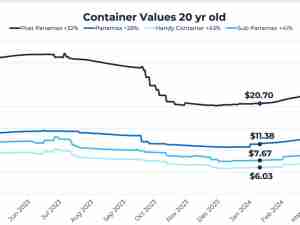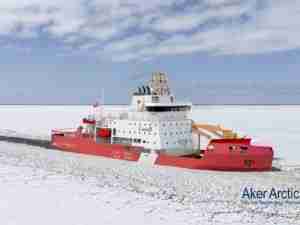Cyclone Debbie Slams Into Australia as Thousands Evacuated
By: | Mar 27 2017 at 10:36 PM | Maritime
The worst cyclone in six years smashed into the coast of Queensland on Tuesday, forcing thousands of Australians to evacuate or seek emergency shelter and prompting some of the world’s biggest miners to halt coal operations.
Cyclone Debbie swept through the Whitsunday Islands, a popular tourist destination in the heart of the Great Barrier Reef, before making landfall between Bowen and Airlie Beach at midday with wind gusts up to 260 kilometers per hour (162 mph), according to the Bureau of Meteorology. As many as 25,000 residents evacuated low-lying areas due to an expected storm surge.
“The ferocity and intensity of these winds is going to be gradually increasing,” Queensland Premier Annastacia Palaszczuk told Sky News on Tuesday. “It is going to be a long, tough day.”
Debbie hit the coast as a category four cyclone, carrying the risk of significant structural damage and dangerous airborne debris, according to the weather bureau. It was the first in two years to reach the coast of the northeastern state and could be worse than Cyclone Yasi in some areas. Yasi was category five—the most severe—and badly damaged sugar- and banana-producing regions and affected tourist sites on the Great Barrier Reef.
In U.S. terms, Debbie would be the equivalent of a Category 3 hurricane on the five-step Saffir-Simpson scale, said Jeff Masters, co-founder of Weather Underground in Ann Arbor, Michigan.
Rainfall of up to 50 centimeters (20 inches) in some areas is expected to cause major flooding, the bureau said. About 34,000 properties had power outages in the Bowen, Whitsundays and Mackay areas, according to supplier Ergon Energy.
Coal Operations
BHP Billiton Ltd., the world’s biggest miner, said it was suspending operations at the South Walker Creek metallurgical coal mine. Glencore Plc is preparing to temporarily halt output from the Collinsville and Newlands mines. Evolution Mining Ltd., Australia’s second-largest gold producer, evacuated its Mt Carlton mine, according to a filing Monday.
Peabody Energy Corp. said surface infrastructure and equipment at its mine sites have been secured and locked down. All sites are maintaining essential services, the coal miner said.
The cyclone’s footprint covers the Burdekin, Proserpine and Mackay sugar-cane growing regions, which account for about half of Queensland’s crop, the industry group Canegrowers said in a statement. It’s too early to say whether the winds would affect the current forecast for a crop of 37 million tons of sugar cane in the harvest that starts in eight to nine weeks, Paul Schembri, the group’s chairman, said in an interview.
“It’s bound to generate some crop losses but at this point in time we can’t speculate what the extent of those losses will be,” Schembri said. “Damage now is just going to be another body blow to farmers at this time of the year.”
Aurizon Holdings Ltd., Australia’s largest freight rail operator, has stopped delivering coal to the export ports of Abbot Point, Dalrymple Bay and Hay Point, the company said Sunday.
The Port of Townsville, which handles approximately A$30 million ($23 million) in trade per day, evacuated vessels and personnel Monday. It took about 40 hours before the first ship was allowed back into port after Cyclone Yasi passed in 2011, Corporate Affairs Manager Sharon Hoops said by phone.
Resolute Mining Ltd. said Monday it had suspended operations and sent home staff at the Ravenswood gold mine, about 100 kilometers inland from Cape Upstart.








